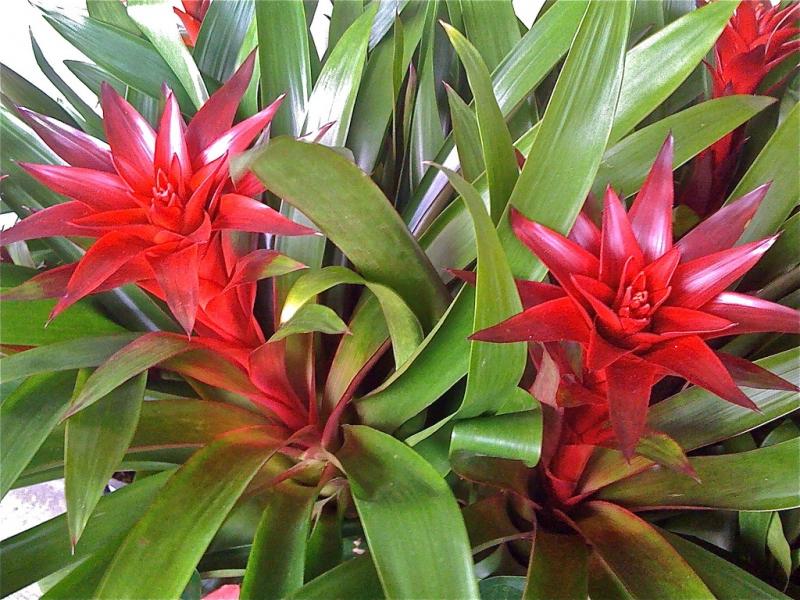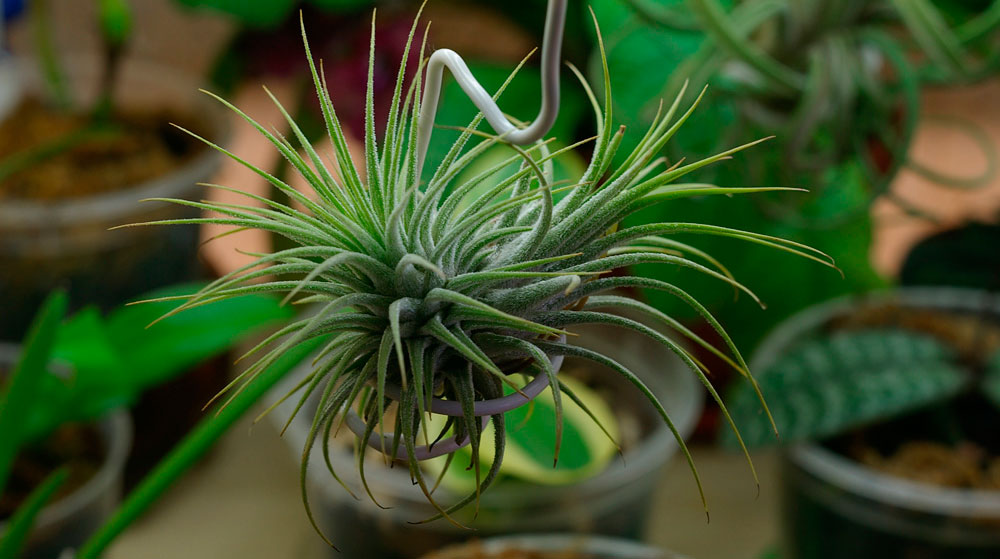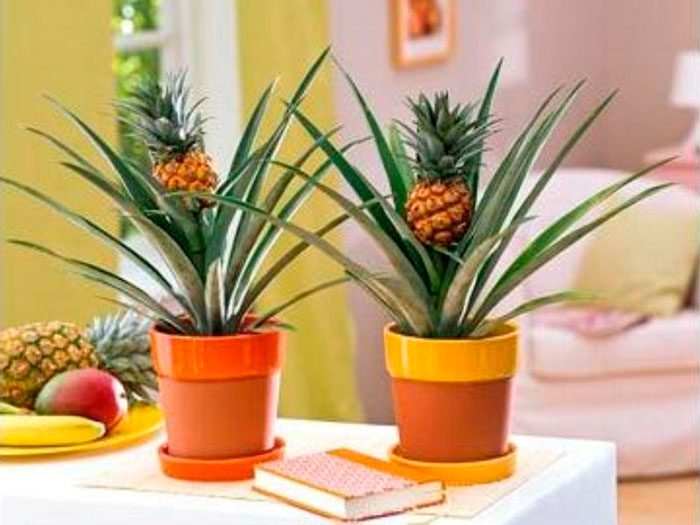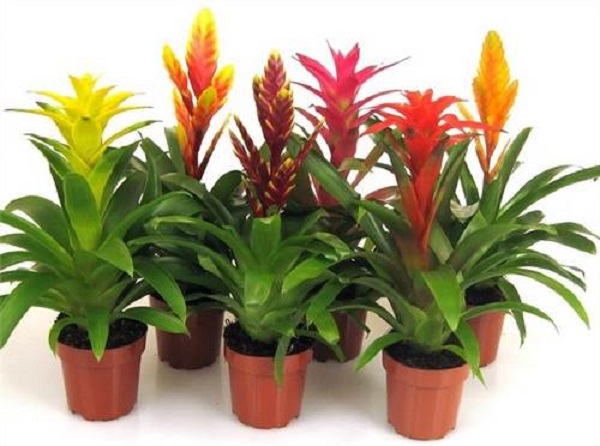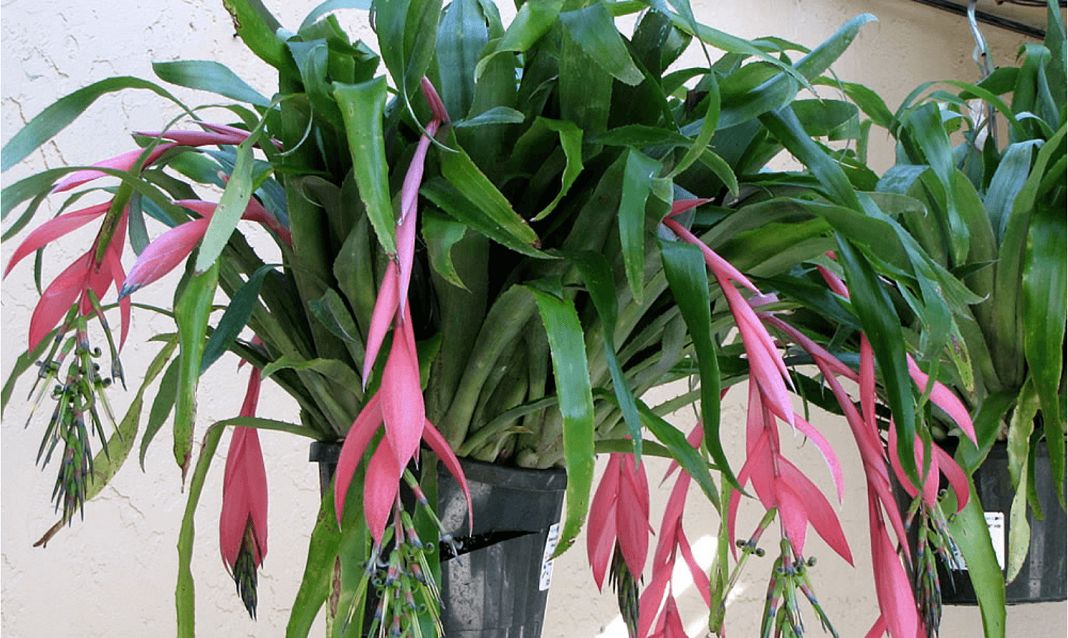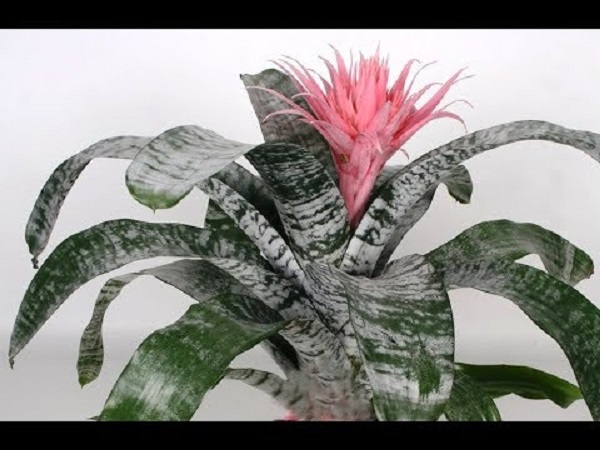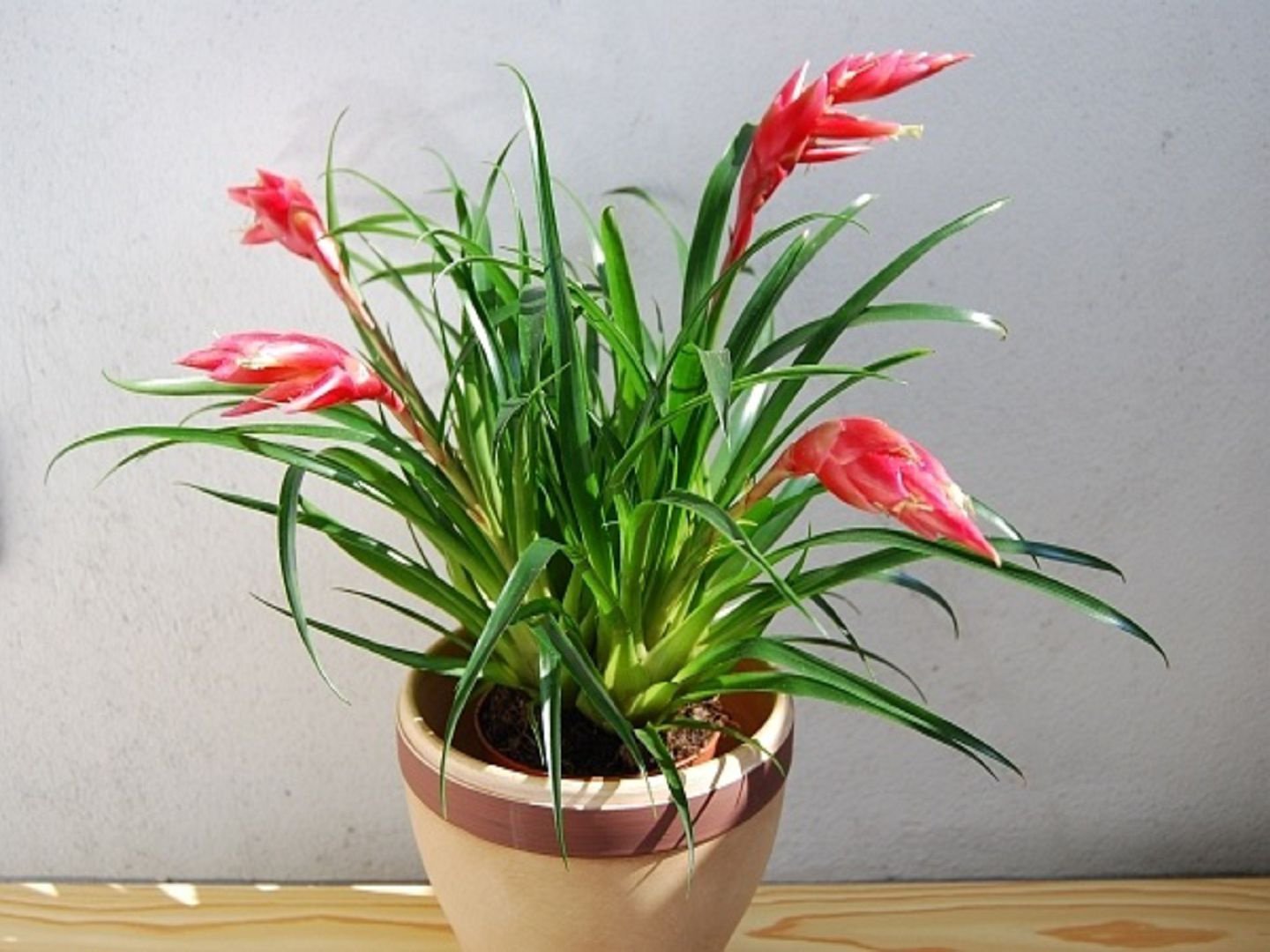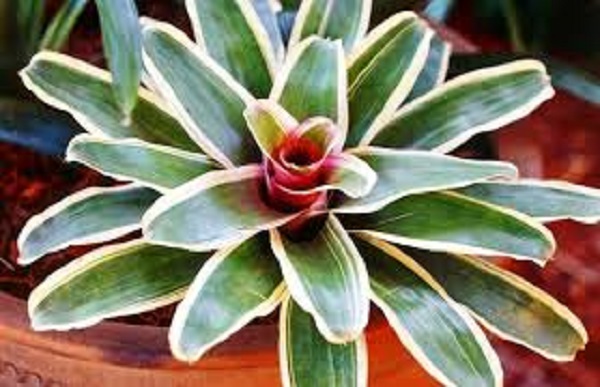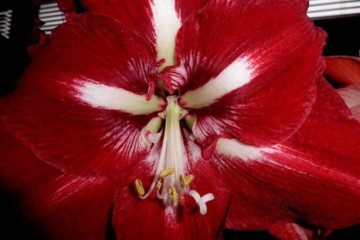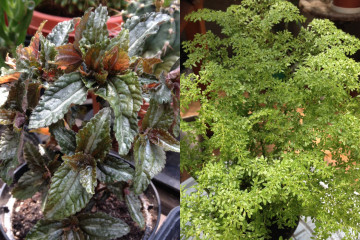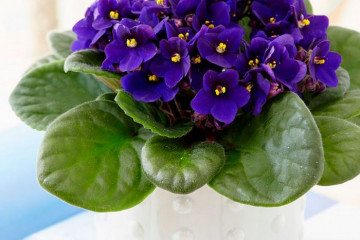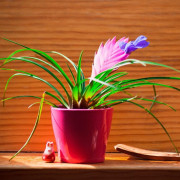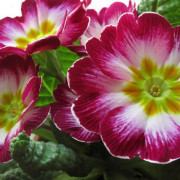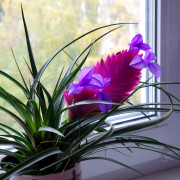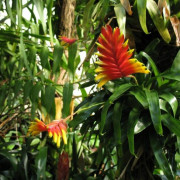Bromeliad family - tillandsia, pineapple, bromeliad and others
Content:
- Bromeliad family
- How to care for these plants at home
- Tillandsia is a plant without roots
- Pineapple as a house pot plant
- Guzmania (guzmania): description of the plant and flower
- Cryptantus: home care
- Bilbergia drooping
- Ehmeya flower: home care
- Vriezia Astrid: description of the plant and features of care
- Neoregelia: home care
Indoor plants not only decorate the interior of a house or apartment, but also purify and refresh the air. Lovers of blooming greenery will be interested in learning about different types of plants from the Bromeliad family.
Bromeliad family
Plants from the Bromeliad family are descended from the tropics, and several species have been found in the American subtropics and one in West Africa.
Bromeliads are epiphytes, meaning they grow on trees, rocks, or other plants and get water and nutrients from the air and rainwater. Unlike most plants, they don't get the nutrients they need from the root system. Their roots are just a way of joining in growing support.
Almost all members of the Bromeliad family are characterized by the presence of a short stem and long xiphoid leaves, which attach to each other and form a funnel. The structure of the leaves is simple: in some representatives of the species they are wide and dense, in others they are thin with a loose structure. Depending on the type, the inflorescence can be capitate, racemose or paniculate.
Types and features of indoor plants from the Bromeliad family
There are about 3000 different types of these flowers, among them: cryptantus, guzmania, vriezia, indoor pineapple, ehmeya, neoregelia, bilbergia, acanthostachis, neoregelia, nidularium and many others.
How to care for these plants at home
Almost all bromeliads are adapted to warm, humid, shady climates. Their original habitat is humid and they grow under the shade of trees or attach to them.
Temperature, humidity, light
Optimum temperatures for bromeliads are in the 15-26 ºC range, but they can survive in very hot climates.
Bromeliad houseplants require 60% humidity. This level is difficult to maintain, especially during the winter when the house is heated.
Air humidification methods:
- put a humidifier near the plant;
- put a tray with moisture, for example, put pebbles, decorative elements in a deep large bowl and fill with water;
- move a few plants closer to the bromeliad, due to the transpiration process, the humidity next to it will increase;
- spray the flower regularly from a bottle with an aerosol tube.
Shine
Not all bromeliads prefer bright, indirect light; some are better off growing in constant shade. In winter, they need to be rearranged to the south-side window.
Optimal soil for Bromeliads
Loose soil is suitable for these representatives of the fauna, which mainly consists of high-moor peat with the addition of leafy earth and sand. Soil for Bromeliads is diluted with bark, coal, coniferous soil, chopped sphagnum.
Tillandsia is a plant without roots
Tillandsia aerial or atmospheric is an exotic plant of the Bromeliad family. The most popular member of the genus, requiring difficult care.
The main way to get moisture in rootless tillandsia is through leaves, which need to be sprayed regularly. To grow this flower, it needs to be provided with a cozy atmosphere with diffused lighting (about 14-15 hours a day), without drafts, with clean fresh air. The optimum temperature for this representative of the Bromeliads is 20-25 ºС.
How to transplant
Tillandsia rootless requires a transplant only once after purchasing it in the store. When the plant fades, it dies off, so it does not need to change the soil.
Variety of species
There are about 500 species of this representative, including: Tillandsia Albida, purple, broad-leaved, moss-like, large, two-flowered, Butza, etc.
Pineapple as a house pot plant
Homemade pineapple will surprise not only the guests of the house, but will also delight the owner's eye all year round. Indoor pineapple is a decorative flower.
Indoor pineapple care
You can grow pineapple at home in a pot if all conditions are created for it, and caring for it does not require much effort. This plant does not need pruning, only replanting in spring and summer. To plant pineapple, you need to cut off the outlet, which is washed in a solution of potassium manganese. Then you need to sprinkle the cut with ash and let it dry. Then the rosette is transplanted into a pot (0.4-0.6 l), where a drainage layer and a loose earthy mixture of leaf humus, turf soil, sand and peat are poured (ratio 1: 2: 1: 1).
A description of how pineapples are grown at home is presented below.
Temperature, humidity and illumination
Indoor pineapple is a thermophilic plant, a unique specimen of the floristic kingdom. It grows well at 25-28 ° C in summer and 22-24 ° C in winter.
Pineapple does not require a high level of air humidity, it thrives in dry climates. Requires regular spraying with room temperature water.
Watering mode
Pineapple should be sprayed regularly, as well as watered with settled water at room temperature every day.
Soil and fertilizers
The soil for the plant should consist of expanded clay, charcoal, broken brick and soil.
Mullein infusion can be added to the mixture (within 4-5 days) during the period of active plant growth.
Guzmania (guzmania): description of the plant and flower
What is Guzmania? Guzmania is a perennial plant of the Bromeliad family. Gusman bromeliads are easy to grow, and their bracts will adorn your home all year round.
Botanical description of popular species of Guzmania
There are over 120 different Gusmania plants that are native to South America. For example: blood-red guzmania, mosaic, Donnell-Smith, Tempo, etc.
Care features
The guzmania bromeliad plant requires a well-lit room, so it should be placed on the windowsills of the east or west window.
The air temperature is appropriate from 25 ºС in summer and 18 ºС in winter.
Water the plant with settled warm water into an outlet every day in summer and twice a week in winter.
When the guzmania flowers die off, the peduncle and dried leaves are cut off.
Cryptantus: home care
Criptanthus is a plant of the Bromeliad family, which does not have a stem, but only long leaves collected in a rosette. Hence the name "earth star".
This flower requires an air temperature of 22-24 ºС in summer and 18-20 ºС in winter.
Growing cryptanthus is impossible in dry air, so it must be well humidified. Better to put a humidifier nearby.
Bilbergia drooping
Bilbergia drooping is a herbaceous perennial epiphyte, the leaves of which are similar to cereals.
Bilbergia houseplant care
This plant of the Bromeliads family is unpretentious and does not require complex care.
The air temperature for the growth of bilbergia is needed at least 12 ºС.
This plant does not require bright lighting, but lives well in poor light.
Moisture should be maintained by spraying the leaves.
Watering mode
Bilbergia requires frequent watering during the warm season (to avoid stagnant moisture). The top layer of soil should dry 2 cm, then water the plant again. In winter, the watering regime occurs once a week.
Soil and fertilizers
Bilbegia is not picky about the soil, so you can choose any water- and air-permeable loose soil mixture.
Top dressing occurs 2 times a month. Fertilizers are used for Bromeliads.
Ehmeya flower: home care
The plant should be in a brightly lit area, such as a south window.
In the summer, a temperature of 22-26 ºС is required, and in the winter - 15-18 ºС.
Air humidity should be kept above average.
The flower requires bright, diffused light.
Watering mode
In the warm season, it requires abundant watering immediately after the topsoil has dried. Pour water into the foliage funnel. In winter, watering is reduced to 1 time in 2 weeks.
The soil for the flower should include sand, foliage and peat.
It is worth fertilizing the plant with a solution of a mineral solution for Bromeliads.
Vriezia Astrid: description of the plant and features of care
Vriezia has an unusual structure - it consists of a rosette of leaves in the shape of a crown. Plant height from 40 to 80 cm. Vriezia produces bright, feather-like flower stalks. At home, she is picky.
The air temperature should range from 24 ° C to 28 ° C in summer and be at least 18-20 ° C in winter.
Air humidity is required high (from 70%). The flower needs regular spraying.
Water the plant after the top layer of the soil dries up by 2-3 cm with warm water. During the spring-autumn period, watering is carried out 2 times a month.
Fertilize the soil with a special solution for Bromeliads.
Vriezia brilliant, or Vriezia Slendens
A variety of the Bromeliad family that is best suited for growing at home. On the leaves, the flower has yellow horizontal inserts and small scales to absorb moisture. Blooms in February and June.
Vriezia Slendens loves warmth (25-28 ° C), so the pot should be warmed up in winter.
Neoregelia: home care
Neoregelia is a low plant of the Bromeliad family, which has a massive root without a stem, consists of several leaf rosettes. It grows up to 20 cm. The leaves have a characteristic dark green color, and in winter they change to red. A short but thick inflorescence grows in the center of the flower.
The natural habitat for neoregelia is swampy shady rainforests and rocky mountain slopes.
Types and varieties for growing at home
Among the varieties of neoregelia, about 60 representatives are known. At home, species such as Carolina, marble inorganic, beautiful, gloomy, bubbly tiger, etc. are grown.
The flower needs bright, natural light.Avoid direct sunlight.
It is necessary to water the neoregelia 2-3 times a week, in winter - 2 times a month.
High humidity is required (at least 60%). Spray and wipe the foliage regularly.
Acceptable temperatures range from 20-25 ° C in summer, and not lower than 16 ° C in winter.
The difficulty of planting representatives of the Bromeliad family depends on the species. Most varieties are easily adaptable to home conditions. When choosing a flower, one should take into account its preferences for temperature, moisture, lighting, frequency of watering, replanting, fertilizing the soil, etc. In order for a plant to take root, it is necessary to satisfy all its whims, then it will delight the eye all year round.
